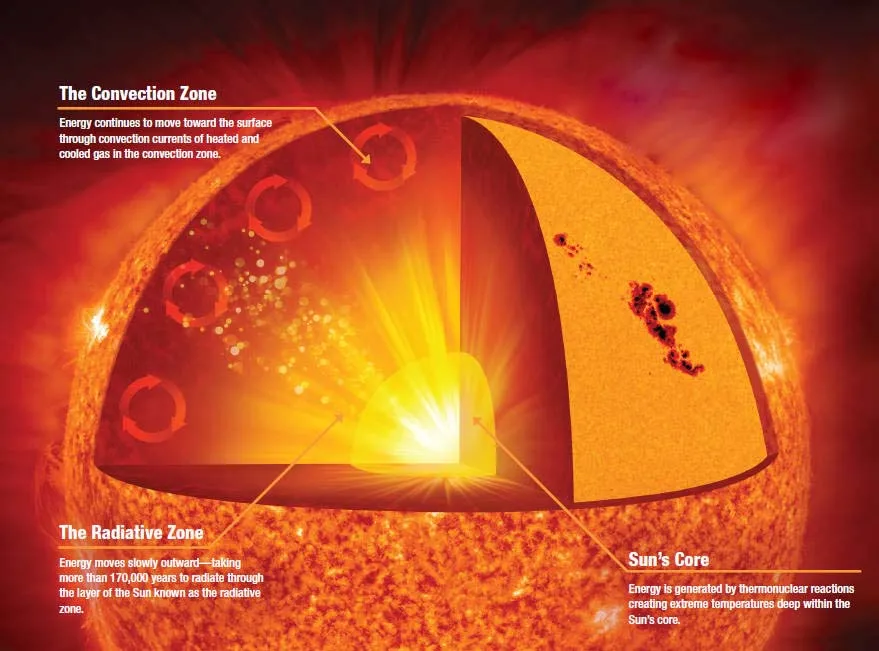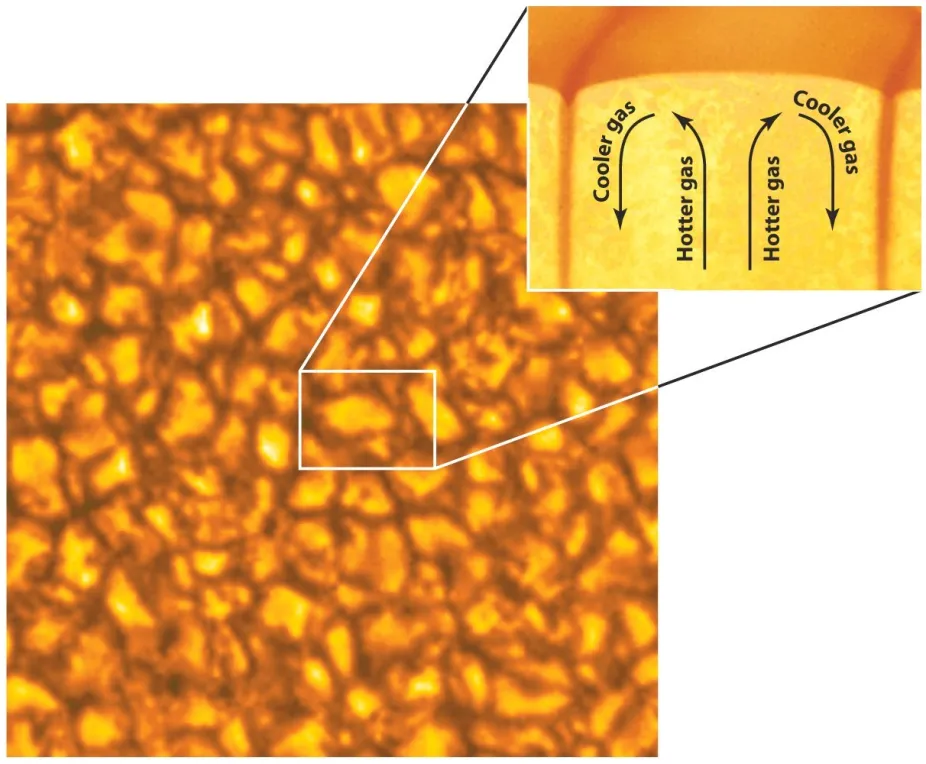Inside the Sun
The Sun’s interior isn’t solid like the interior of Earth. It is a ball of swirling, hot plasma that is held together by a balance of forces between gravity and pressure. The dense gases inside the Sun are so massive that they create a strong gravitational pull, which helps to keep solar material from escaping. As a counter force, the expanding hot gases create a large amount of pressure pushing outward toward the Sun’s surface. The push and pull between gravity and pressure create conditions that maintain the three interior regions of the Sun: the core, the radiative zone, and the convective zone.

Three regions make up the solar interior: the core, radiative zone, and convective zone.
NASA
The Sun’s Core
The core is at the center of the Sun and extends about a quarter of the way to the surface. About half of the Sun’s mass is within the core. Even though the core is made of gas, it is 10 times more dense than lead. It is also the hottest region of the Sun, about 15 million ℃ (27 million ℉). The Sun’s core is the only place in our solar system where temperature and density conditions are high enough for nuclear fusion to occur naturally. The constant reactions within the core fuse hydrogen atoms into helium atoms, releasing extremely large amounts of energy in the process. Some of the energy that is created in the core travels to the surface of the Sun, through the Sun’s atmosphere, and out into space — enough of it reaching Earth’s surface to sustain life.
The Radiative Zone
The layer just outside of the Sun’s core is known as the radiative zone. Here, photons of light carry the energy created through nuclear fusion reactions in the Sun’s core toward the surface as thermal radiation. It can take millions of years for energy to travel through the radiative zone. Density and temperature decrease as you move farther away from the Sun's core, such that near the top of the radiative zone temperatures have cooled to about 2 million ℃ (4 million ℉). The radiative zone is the transition between the core and the convective zone and extends about two-thirds of the way to the Sun’s surface.
The Convective Zone

Granulation at the surface of the Sun is caused by convection currents within the Sun’s interior.
Patrick Hall, York University
The outermost region of the solar interior is the convective zone. It extends from the radiative zone to the surface of the Sun. Here, the expanding hot plasma carries energy up toward the Sun’s surface. The plasma cools as it moves farther away from the core, dropping to about 5,700 ℃ (10,290 ℉) at the top of the convective zone. As it cools, the plasma becomes denser and sinks toward the bottom of the convective zone. Here, it is heated again from deeper within the Sun and rises toward the surface. Energy flows through these convection currents, which appear as granules on the visible surface of the Sun.